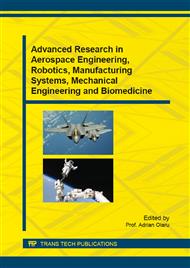p.311
p.318
p.323
p.333
p.339
p.347
p.353
p.359
p.365
RES Storage Solution for Clean Electrification of Passive House
Abstract:
This paper illustrates the results of comparative study regarding two RES storage solutions for a energen hybrid system that power supply a passive house. In this case-study was used sun and wind as a primary sources and their storage was realized in S1 scenario through electrolytic hydrogen and in S2 scenario through battery. The aim of this research was to demonstrate the capability of hydrogen to integrate renewable energy sources in green electricity production for stationary applications, especially to new concepts of low energy buildings. As main results was found that on S1 is harnessed 77% of total energy production of the system to obtain hydrogen and on S2 just 10%. Storage by electrolytic hydrogen generates 55% reduced amounts of CO2 emissions compared with storage by battery. Total S1 NPC was with 45,6 % higher than S2 due to conversion equipment of hydrogen into electricity.
Info:
Periodical:
Pages:
339-344
Citation:
Online since:
November 2015
Keywords:
Price:
Сopyright:
© 2015 Trans Tech Publications Ltd. All Rights Reserved
Share:
Citation:


